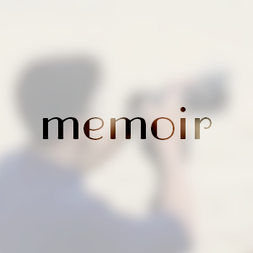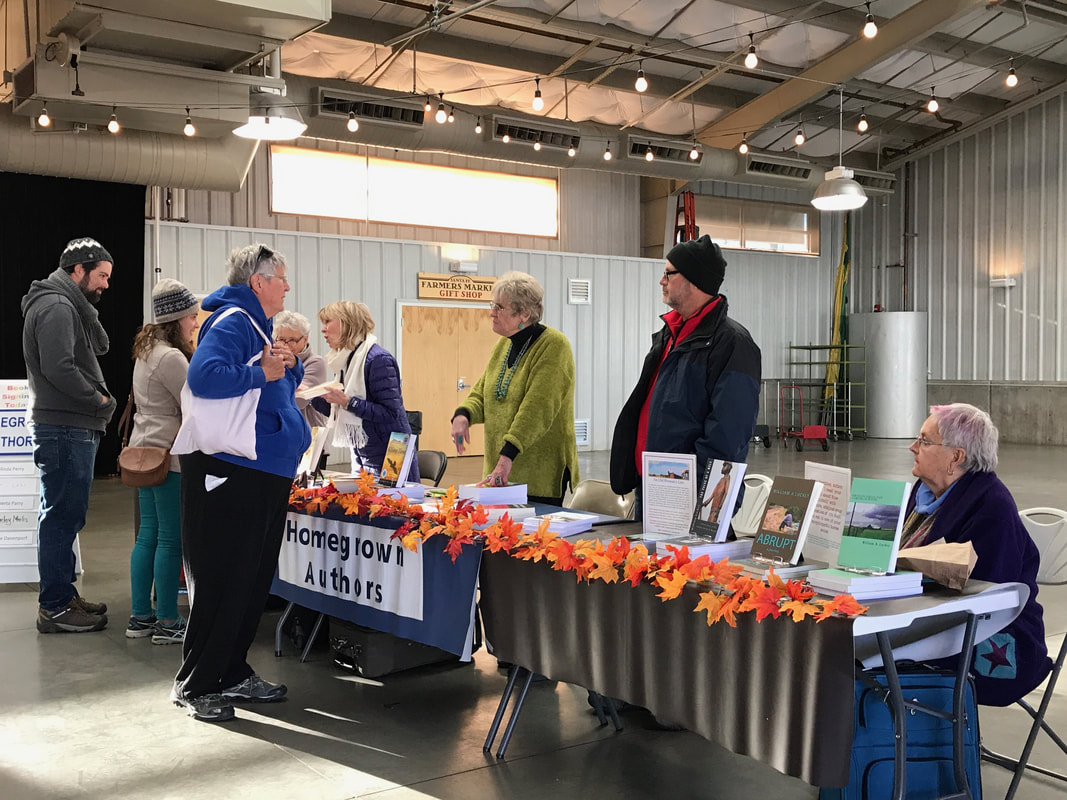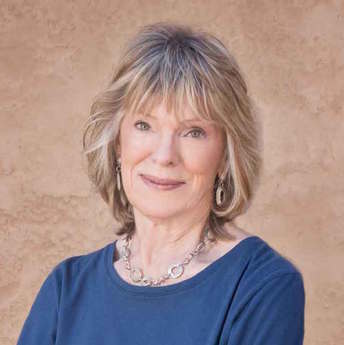 I’d been writing my memoir for three years when I called my first draft DONE and looked for an editor who could tell me what was missing. “I know exactly what’s missing,” editor Morgan Farley said, two weeks after I handed her a 400-page manuscript. “For starters, you have four books in one. I’ve noted the number of pages in each and would suggest you go with the one with the most pages, because that seems to be where your energy is.” Early in the process I’d shared the first 60 pages with my goddaughter, an author of books for middle-school-aged children.” “Shirley,” she said, “you need to finish this. Others will want to read it.” Really? If that’s the case I’d better go the distance and make it worthwhile, I thought. “But you need to write about Joe (my first husband),” she said. Taking her advice to heart, I wrote about Joe and once I’d done that I figured I might as well write about my philandering Greek lover and my troubled mother.
Lesson #1: A memoir is not a beginning-to-end autobiography. It’s a slice of your life, limited in scope, with a unifying theme. My scope? 2 ½ years. Theme? Finding love late, losing it too soon yet choosing to love again. Lesson #2: Sources. Some memoir writers journal, others keep diaries, letters and scrapbooks. In college I was a history major with a healthy regard for original sources. My original sources for Banged-Up Heart? Emails and a detailed journal. Good recall of conversations helped too. With the scope narrowed and the theme clear, there was still a lot missing and yet, I thought I had put down everything! Lesson #3: A memoir is more than the visible, external story. In my 2 ½-year story, there was a lot of action, a lot of drama, but action alone is not enough. Explicit in the definition of memoir is “intimate experience,” intimate meaning deep within. I had to go deep inside, reliving some painful moments, to find the unvarnished truth. And once I acknowledged it, I had to have the courage to put it on paper and let the chips fall where they may. This was hard for me, initially, because I’m not by nature introspective but with questions and guidance by my editor, I found I could be. Often, a simple question, e.g., What were you feeling? could, once I was home alone, trigger recall of intensely felt emotions. Lesson #4: Use the tools of novel-writing to make your memoir come alive. Create scenes, characters and dialogue. Resolve tension. Show rather than tell. As a longtime business writer, a scene was where a meeting took place. Dialogue? Reporting contrasting views by one or more speakers, while germane to business writing, was hardly a conversation. Scene-setting: We create scenes to help anchor the reader with where we are and what’s happening, with enough detail to give a sense of place but not too much – too much detail can inhibit the reader’s imagination. A scene takes place in one place and one time period. Whenever you move location or time in a significant way, it becomes a new scene. In a scene, you want the reader to see, hear and smell, even taste and touch everything you see, hear, smell, taste and touch. This gives the reader a sense of being there, in the moment. (See page 100 in Banged-Up Heart.) More on creating scenes: A scene is a moment when something happens and someone responds in the outer world. The reader wants to see you externally and internally. Tell your story as you would to your best friend, allowing a kind of intimacy to happen.
Lesson #5: Reflection. A memoir is more than using fiction techniques. In memoir-writing, part of the process is reflection. You have a point of view at a certain time, but you need to look back and reflect on that point of view from where you are now. (See examples in Banged-Up Heart on pages 21, 33 and 71.) Lesson #6: Unpack key moments. Slow down so the reader sees and hears what you see and hear, so the reader is in your skin. (Beginning on page 258, you’ll see nearly two pages that started out as nine lines before I unpacked the moment.) Slowing down was hard for me. When I was working with lobbyists in a fast-paced environment, I did a lot of things almost simultaneously. On slowing down by author Natalie Goldberg: “Writing can train you to wake up. I had to get slow and dumb (not take anything for granted) and watch and see how everything connects.” Lesson #7 Voice. When you slow it down, your natural voice can come out. Lesson #8: Tell on yourself. The more you can tell on yourself, the more the reader will like you and trust you as a story teller. (See page 50, my reaction to John’s revealing my age to Carla.) Lesson #9: Use slang or colloquial expressions. These communicate a little of who you are and make the writing more lively. (See “chowing down” on page 21; “hardly ready for prime time” on page 22.) Lesson #10: Show feelings through what the body does. (Examples from Banged-Up Heart and a few from Jennifer Lauck’s Blackbird: Instead of “John listened attentively to my story,” I wrote “His eyes never left my face.” Others: I nodded my understanding; her eyes opened wide; alarm rang in my brother’s voice; my stomach moves around and around the way it does when I’m hungry except I’m not hungry; she breathes in and out like she can’t get enough air and sweat dots poke out on her top lip. Lesson #11: Revise by free-writing. I had to re-live some painful moments by re-entering the experience in mind and body. To do this, I often set time limits, e.g., 15 minutes on a particular moment, using pen on paper, NOT computer. Lesson #12: Pacing. When I wrote my first draft, I wrote down everything without a thought about pacing or structure. But in rewriting, I had to think about pacing. When looking at a paragraph, think about it in terms of action. What are you trying to make happen? And weigh whether stuff is extraneous. Too much can slow the narrative. With our own lives, it’s hard not to think everything is important, but you have to include only those things that are good for the story. (The sentence on page 2 of Banged-Up Heart, “Would you like to take a walk?” replaced three pages of extraneous stuff in my first draft – a lot of detail about what I was wearing and how John and I walked down the porch steps to the public sidewalk -- I cut all but this one sentence.) Pacing as it relates to chapters: Look at each chapter and ask: Does it stand alone? Does it have a beginning, middle and end? You need an arc in each chapter where something happens. Episodic does not a story make. Each chapter has a purpose, structure and action that give it momentum. Each chapter should have one full scene with dialogue, characters and description. Lesson #13: When writing about travel, write about the unordinary. For example, many people have not been to Botswana (pages 75-80) but in writing about France where many readers have traveled, the challenge was to make it new by experiencing it through my eyes, e.g., What was it like to climb all those steps to the abbey at Mont Saint-Michel? (See pages 105-106.) Lesson #14: Logistics -- Don’t get hung up on logistics, getting from place to place – it’s TMI (too much info.) Lesson #15: Remember the power of short, declarative sentences. They add tension and a sense of urgency. (See 148, in emergency room.) Lesson #16: Revealing intimacies – Someone asked if I had any qualms about revealing intimacies found in my memoir. Yes, initially I did. But when my editor asked questions I had to answer, I became more comfortable with revealing and decided that if I wasn’t hurting someone else, I would tell the truth. Reviewers have called Banged-Up Heart “remarkably candid,” filled with “. . . and shocking honesty.” Lesson #17: The strength of a memoir is the weaving together of present time with reflection on times past. This is how we experience life. We’re in present time but going in and out. Present and past are possible when you slow the action and your story becomes rich with layers of memory and feeling. Although I discarded all in my first draft except the book about John, I was able to use a lot of the writing I’d already done. For example, Joe comes in as my backstory in the context of meeting John. (See pages 3-5.) I selected anecdotes from the Joe story and placed them in the narrative about John and me. By doing this, my story became more poignant. It gave the story of John and me more depth and me as a character more depth and vulnerability and makes it easier for the reader to identify with me.
1 Comment
By Shirley Melis “I came here expecting to buy produce, and here I am, buying books!” The tall man in khakis and a blue polo shirt cradled three books in one arm while his wife listened to another author at the table pitch her book. Home-Grown Authors, sponsored by the New Mexico Book Association, is the brainchild of Maxine Davenport, a local author who writes compelling short stories and novels about strong women. Love Is a Legal Affair is her latest. As many as six local authors can be found indoors at Santa Fe’s Farmers Market every Tuesday morning until Thanksgiving. Their works of fiction and non-fiction run the gamut from westerns and murder mysteries to memoir and travel stories. • Gone to the Dogs is author Tom Lohr’s story of his 103-day odyssey to find the best combination of baseball and hot dogs at major league baseball parks in North America. • Belinda Perry, author of An Old Woman’s Lies, also writes westerns, using the name William Luckey. “When I started writing westerns, I figured no one would buy a western written by a woman,” Belinda confides. • Taking the act of walking seriously is author Michael Metras’s mission. Germany to Rome in 64 Days: Our Pilgrimage is Michael’s book about a walk he took with his wife, whom he met on a walk across northern Spain. On the Germany-to-Rome trek, each went through nine pairs of shoes. Farmer's Market Author's TableNM Book Association sponsors the table, exhibitors must be members of NMBA. For further information about exhibiting, please contact Maxine Davenport: [email protected]. Authors present on October 10, from left to right (and latest publication):
Maxine Neely Davenport ("Love is a Legal Affair") Shirley Melis ("Banged-Up Heart") Roberta Parry ("Killing Time") Tom Lohr ("Command Decision") Belinda Perry (pen name: William Luckey, "Time Alone")  “Send your creative works for display at Reunion.” My college reunion was three months off but, regrettably, my memoir, my creative work, was not finished. I was still rewriting with no likelihood of completing it in time. But what an opportunity to promote it! I thought. I might even find the name of a literary agent from an author classmate. My editor agreed. With her encouragement, I met with Amiel Gervers, a tall brunette who’d left an advertising career in New York City to live in Santa Fe, New Mexico. “Shirley, I can design a website for your book, and I can have it finished with posters and postcards in time for your college reunion.” Stirring sugar into her tea at the Teahouse on Canyon Road, Amiel told me what she’d need. “First, I want to read your book. I know you haven’t finished rewriting it, but that’s all right. I want to select quotes to go with some of these photos you’ve shown me. You’ll need to send these to me electronically. Also, I’ll need a bio from you and while you at it, something about your “Tahoe Traveler” writing experience. In my twenties, I’d traveled in Europe and the Middle East, writing a column for the Tahoe Daily Tribune. Within days, Amiel had everything she needed from me with one exception: a title for the book. I’d sent her a photo to use as a cover mock-up -- a burned out forest with nascent green grass denoting regrowth in the foreground. But I was still clueless about a title. Months earlier, I’d discarded a working title, Love + Loss x Two, because I’d narrowed my focus to my recent love and loss. Hoping for an epiphany, I hunkered down with the last several chapters. I would be discussing one, possibly more, of these with my editor in a few days. In one chapter, my attention riveted on a selection by writer Anne Lamott that the Rev. Kim Beach read at John’s memorial service. That’s it! I thought. Eager to share my find with editor Morgan Farley, I could hardly contain myself as I sat down at the table for our editing session. “I have a title!” I blurted. “So do I,” she said. “Banged-Up Heart,” I said. “That’s what I came up with, too.” Morgan beamed with delight. And that’s the story of how I found a title for my memoir – in time to promote it at my college Reunion. Since then, the cover has changed but the title remains.  A few months after my husband’s death, I told close friends I was going to write about my life with him, cut short two years after we married. I felt blindsided, but by what I didn’t know. By John? By my own naivete? I had to figure it out. A writer most of my life, I was comfortable putting pen to paper. Aided by a journal I’d kept and a boatload of emails I’d written during John’s last months, I set out to tell my bittersweet story. After two years of grieving for my first husband, I’d been swept up into a whirlwind romance by a younger man who was a rocket scientist. We married and created an adventurous new life together. We were supremely happy – and then I lost him to a brain tumor. Day and night, in Santa Fe and Reston, Va., I sat at the computer, my fingers flying across the keyboard, capturing the essence of my two-year odyssey. Friends read my drafts and came back with questions that caused me to re-think and re-write. Over tea at Collected Works Bookstore in Santa Fe, I handed my manuscript to editor Morgan Farley. “I’ve been writing for three years, and this is what I’ve produced,” I said. “I know there’s something missing but I don’t know what it is.” “I know what’s missing,” Morgan said in a phone call a couple of weeks later. Relief washing through my body, I grabbed a pen to schedule another meeting. “You have three books in one,” she began. “I’ve made a note of the pages devoted to each and would suggest you go with the one that has the most pages because that seems to be where your strongest energy is.” I’d started off on the energized track, but a close friend who’d known and loved my first husband Joe suggested I also write about my life with him. Once I’d done that I thought, Why not write about my life before Joe – about Nikos in Greece and while I’m at it, my troubled mother? Back on track, I listened to Morgan talk about the craft of novel writing and how it applies to writing memoir. She explained that a story comes alive when you create scenes to show action, and use dialogue to reveal personality and character. We talked about using description but not too much, to allow the reader to use her imagination, and pacing by relieving highly charged scenes with narrative while keeping the story moving. It was a lot for me to absorb. A history major in college, I hadn’t read many novels; I’d read original sources and become practiced at critiquing authors’ premises and their use of sources to back them. Later, in my professional life, I did a lot of business writing – press releases where scene-setting meant naming the place where a meeting was held and dialogue meant adding direct quotations by speakers that revealed neither personality nor character. Rewriting my memoir to give it the missing ingredients sounded challenging. “If you choose to do this, it will be transformative,” Morgan said. Over the ensuing months, Morgan frequently asked, “What were you feeling?” – inviting me to dig deep for my interior emotional state. She helped me to confront my story as I lived it, subjectively, and to reflect, time and again, on the significance of my feelings, thoughts and actions. Looking deep inside to find my truths, when I wasn’t by inclination introspective, challenged me. Having the courage to put them on paper, even those I might not like, meant overcoming my own inhibitions and ignoring the advice of well-meaning friends who believed personal publicity of any sort should be limited to births, marriages and deaths. “It’s too personal,” a good friend confided after reading the first several pages. The greatest joy in writing Banged-Up Heart was hearing Morgan say, “Beautiful, beautifully expressed.” Or, “I just kept reading, forgetting I was supposed to be editing.” I also heard from Morgan, “Shirley, I’m sorry but this doesn’t work.” And I’d toss eight hours worth of carefully crafted prose. The successive joys of landing a top-notch agent, Liz Trupin-Pulli, and a publisher, Terra Nova Books, are more than icing on the cake. They’ve made it possible for me to bring my years of hard work to fruition. |
Author BLOG
I'm Shirley Melis. You may know me as Shirley M. Nagelschmidt, Shirley M. Bessey and now, Shirley M. Hirsch. Each reflects a particular phase of my life. Banged-Up Heart is a slice of my life's journey and in telling my story, I'm giving voice to my long silent "M" by reclaiming my maiden name, Shirley Melis. Archives
January 2024
Categories
All
|



 RSS Feed
RSS Feed